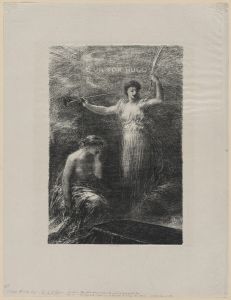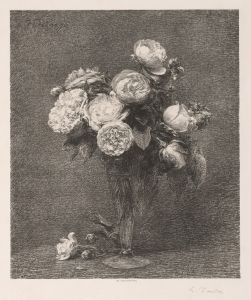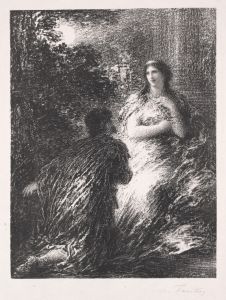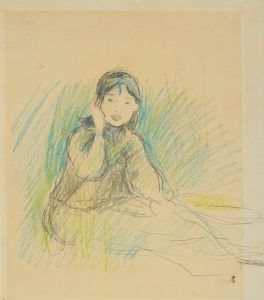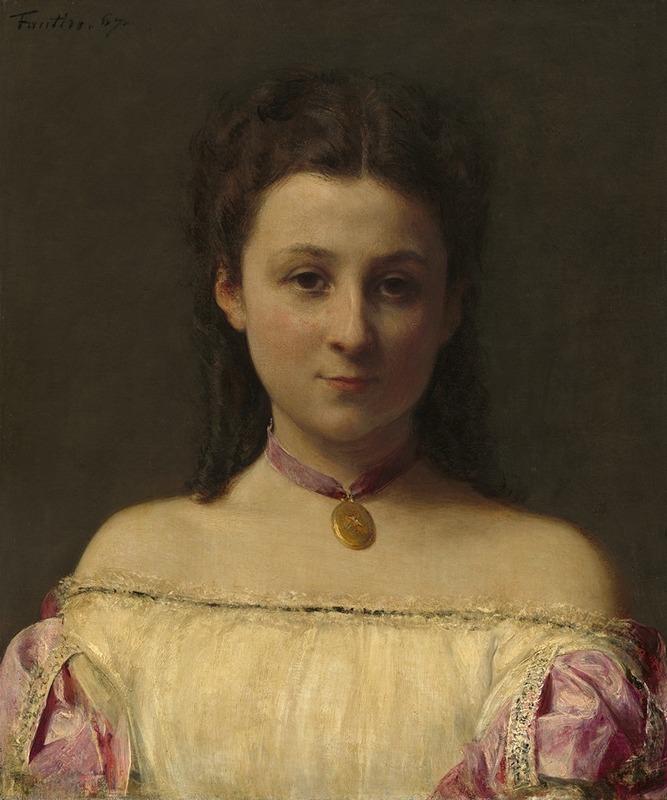
Mademoiselle de Fitz-James
A hand-painted replica of Henri Fantin-Latour’s masterpiece Mademoiselle de Fitz-James, meticulously crafted by professional artists to capture the true essence of the original. Each piece is created with museum-quality canvas and rare mineral pigments, carefully painted by experienced artists with delicate brushstrokes and rich, layered colors to perfectly recreate the texture of the original artwork. Unlike machine-printed reproductions, this hand-painted version brings the painting to life, infused with the artist’s emotions and skill in every stroke. Whether for personal collection or home decoration, it instantly elevates the artistic atmosphere of any space.
Henri Fantin-Latour, a renowned French painter and lithographer, is celebrated for his exquisite still lifes and portraits. One of his notable works is "Mademoiselle de Fitz-James," a portrait that exemplifies his skill in capturing the essence and character of his subjects with remarkable precision and sensitivity.
Henri Fantin-Latour was born on January 14, 1836, in Grenoble, France. He moved to Paris in 1850, where he studied at the École des Beaux-Arts and honed his craft under the tutelage of Gustave Courbet and other prominent artists of the time. Fantin-Latour's work is often associated with the Realist movement, although he also had connections with the Impressionists, particularly Édouard Manet and Edgar Degas.
"Mademoiselle de Fitz-James" is a portrait that showcases Fantin-Latour's meticulous attention to detail and his ability to convey the personality and inner life of his sitter. The painting features a young woman, presumably a member of the Fitz-James family, a noble lineage with historical significance in France. The Fitz-James family is known to have roots tracing back to the illegitimate descendants of King James II of England, who fled to France following the Glorious Revolution.
In this portrait, Fantin-Latour employs a restrained palette, focusing on subtle gradations of color to create a lifelike representation. The sitter is depicted with a serene and contemplative expression, her gaze directed slightly away from the viewer, which adds a sense of introspection and depth to the composition. The background is kept simple and unobtrusive, ensuring that the viewer's attention remains firmly on the subject.
Fantin-Latour's technique in "Mademoiselle de Fitz-James" is characterized by his smooth brushwork and the delicate rendering of textures, particularly in the depiction of the sitter's clothing and hair. The artist's ability to capture the play of light and shadow enhances the three-dimensionality of the figure, making her appear almost tangible.
Throughout his career, Fantin-Latour remained dedicated to portraiture and still life, often drawing inspiration from the Old Masters while also contributing to the development of modern art. His portraits, including "Mademoiselle de Fitz-James," are celebrated for their psychological depth and technical mastery.
Henri Fantin-Latour passed away on August 25, 1904, in Buré, France, leaving behind a legacy of works that continue to be admired for their beauty and precision. "Mademoiselle de Fitz-James" remains a testament to his exceptional talent and his ability to immortalize his subjects with grace and sensitivity. The painting is a fine example of 19th-century portraiture and reflects the artist's commitment to capturing the human spirit through his art.







